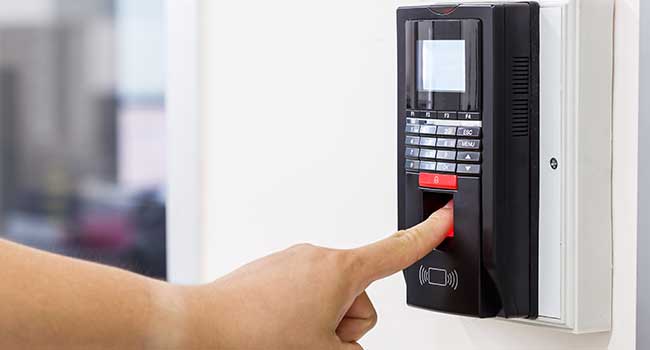
Texas High School Deploys Fingerprint Access Control
After receiving approval from the district’s school board last summer, Lufkin High has become the first East Texas school to install keyless entry fingerprint scanners at campus entry points.
- By Jessica Davis
- October 16, 2018
Students and faculty at Lufkin High School in Lufkin, Texas, must now use a fingerprint scanner to enter the campus at certain hours of the school day. After receiving approval from the district’s school board last summer, Lufkin High has become the first East Texas school to install keyless entry fingerprint scanners at campus entry points.
Biometric fingerprint scanners have been installed at five major side and back entrances to the campus, according to Principal Brandon Boyd. There are also security features at each scanning point that unlock the doors from the inside in case of an emergency, he said.
"The biometrics was just another opportunity to make our building more secure and to keep our kids and our staff safer, but also [to] allow our kids and our staff easy access to the building,” Boyd said. “The people who need to be in the building can get in."
Of the 2100 students on campus, Boyd says most have opted into the fingerprinting process. Those who have chosen not to participate must check in with campus security at the front door, as must any visitors to campus, he said.
"The students or the families who did not feel comfortable with it, they didn't have to do it,” says Principal Boyd. “It'd just be an inconvenience for them needing to come into the building. But with the biometrics, once it's taken, it's in our system and it's here on campus. It doesn't go anywhere else."
Students and staff said the new biometrics system is another way to ensure security and safety on campus, in addition to being more convenient for students.
"You may lose your ID and not have your ID, so you probably couldn't get in,” said Adam Holden, a senior at Lufkin High School. “But now, since all they have to do is scan your finger, your finger is always there.”
Holden added that as a student, there’s a sense of security and comfort in knowing who can enter the campus and through which doors.
"My first three years at the high school, there was no kind of security thing here and the doors were unlocked, so people could come in and out of here as they want," Holden said.
About the Author
Jessica Davis is the Associate Content Editor for 1105 Media.